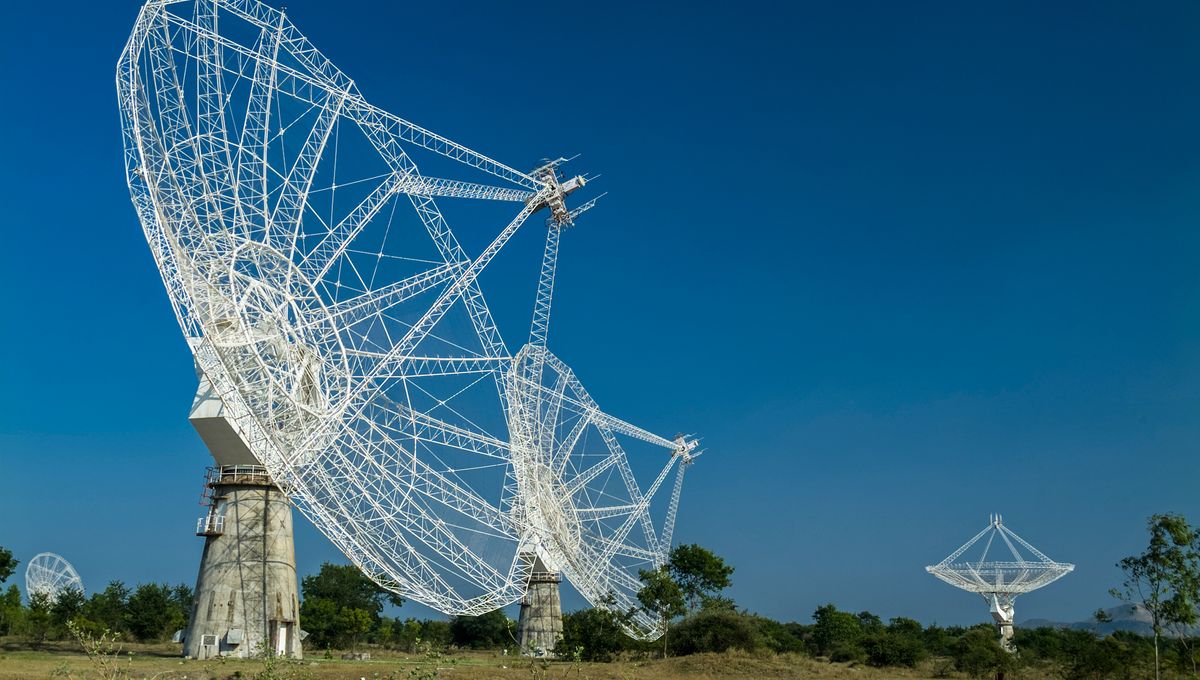
Hydrogen is the most common element in the universe, and it comes in the form of a single atom or paired up in a molecule. Atomic hydrogen can emit a particular light as it changes quantum state, known as the 21-centimeter line – the particular wavelength of the radio emission (equivalent to 8.27 inches). New observations have been able to spot this emission in the most distant galaxy yet.
The simplest hydrogen atom is made of a proton and an electron. Elementary particles have a quantity known as spin, and the least energetic configuration is when the spin of these two particles points in the opposite direction. But often, when hydrogen forms or interacts with other things, they point in the same direction. So over time, the system will release some energy and switch. That energy is the radio emission that astronomers have been looking for.
The previous record holder for the most distant detection of the 21-centimeter line emitted those radio waves 4.1 billion years ago. The new detection more than doubles that. It traveled across the universe for 8.8 billion years. Spotting this emission was possible thanks to the presence of a gravitational lens. A dense foreground elliptical galaxy located 1.8 billion light-years away has warped space-time with its mass. The 21-centimeter line comes from a galaxy behind it whose light has been magnified significantly.
“In this specific case, the magnification of the signal was about a factor of 30, allowing us to see through the high redshift universe,” co-author Professor Nirupam Roy, from the Indian Institute of Science, said in a statement.
Redshift is a quantity measured by astronomers, and it is proportional to how far away an object is in the universe. Due to the expansion of the universe at cosmic distances, the light emitted by objects is shifted towards the red portion of the visible light spectrum, hence “redshift”. You can imagine the wavelengths of light being stretched as the universe expands. So, the emission from this galaxy, while originally 21 centimeters, was measured at a longer wavelength.
“Due to the immense distance to the galaxy, the 21 cm emission line had redshifted to 48 cm [18.9 inches] by the time the signal travelled from the source to the telescope,” added Dr Arnab Chakraborty, from McGill University.
With these measurements, the team was able to estimate how much atomic hydrogen is in the galaxy. The value is equivalent to 900 billion Suns, which is about twice the estimated mass of the stars in that galaxy.
The observations were possible thanks to the use of the upgraded Giant Metrewave Radio Telescope (GMRT). The observatory is located in Narayangaon, India.
“Detecting neutral hydrogen in emission from the distant Universe is extremely challenging and has been one of the key science goals of GMRT. We are happy with this new path breaking result with the GMRT, and hope that the same can be confirmed and improved upon in the future,” explained Yashwant Gupta, center director at the National Centre for Radio Astrophysics.
The work is published in the Monthly Notices of the Royal Astronomical Society.
Source Link: Atomic Hydrogen Detected In Most Distant Galaxy Yet